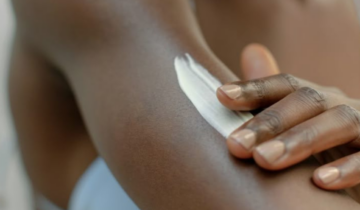Have you struggled with anemia? Is your iron marker: ferritin somewhat on the low side on your last bloodwok? This article is for you!
Most cases of iron deficiency are from issues with the iron transport in usage rather than low dietary intake of iron:
- With the iron fortification program since 1941, there has been an increase of 380% of iron in our food.
- We are living on a planet with an iron core, leaking into every composition of our ecosystem
- From the water we drink to the water we bath in, iron is present.
- Medication often contains iron, especially the placebo pills in contraceptive medication.
What exactly is happening?
In a nutshell, for iron to recycle (RES) through the body, it needs the proper micronutrient cofactors:
- copper
- vitamin A (retinol)
- vitamin C
- B vitamins: B1/B2/B6/B9/B122
RES plays 2 major roles: it recycles iron from blood cells and acts like a storage for excess iron.
Without the cofactors to keep the recycling going, iron is stored in our tissue, causing inflammation, also known as oxidative stress, to the cells and mitochondria. Copper is the only mineral that keeps iron in transport mode through an enzyme called ferroxidase and activates oxygen. On bloodwork, ferritin, a protein that stores/releases iron when the body needs it, will show as low, but this marker is only 1/3 of the big picture since the status of all cofactors and liver health are as important to understand where the glitch truly is.
Cofactor micronutrients are as important as Iron:
Our copper intake mostly comes from our foods, but since the 1970s, our soil has been greatly depleted for it, making our produce low in this component. Our intake of animal offal and dairy products is also highly diminished, big sources of easily absorbable copper and retinol.
Copper and iron dysregulation are very much connected. Iron and Copper deficiencies have very similar symptoms:
- Fatigue
- Pale complexion
- Decrease in intellectual performance
- Difficult maintaining normal body temperature
- Weakened immune function
Practical tips and nutrition:
In the event where anemia is diagnosed, here’s some points to discuss with your doctor:
- Ask your doctor about the difference between intracellular storage protein, ferritin, hemoglobin.
- Request a blood test with additional markers like copper, ceruloplasmin, vitamin A, magnesium, that accounts for 70% of the iron in your body, as opposed to the ~10% that is represented in ferritin.
- Consume copper rich foods: liver, oysters, bee pollen
- Consume retinol rich foods: liver, butter/ghee, fish/fish roe, eggs
- Reconsider iron fortified foods and medications with your doctor.
- A plan can also be put together with a naturopath to support your journey through a whole food and herbal perspective.
Maybe copper is the [CU]re to the cause!
For educational purposes only.
Article contributed by Andra Sitoianu, Naturopath
To reach Andra, please visit www.wellnessbyandra.com or send a quick message to @wellness.by.andra
Feature image via Pinterest





 No products in the cart.
No products in the cart.